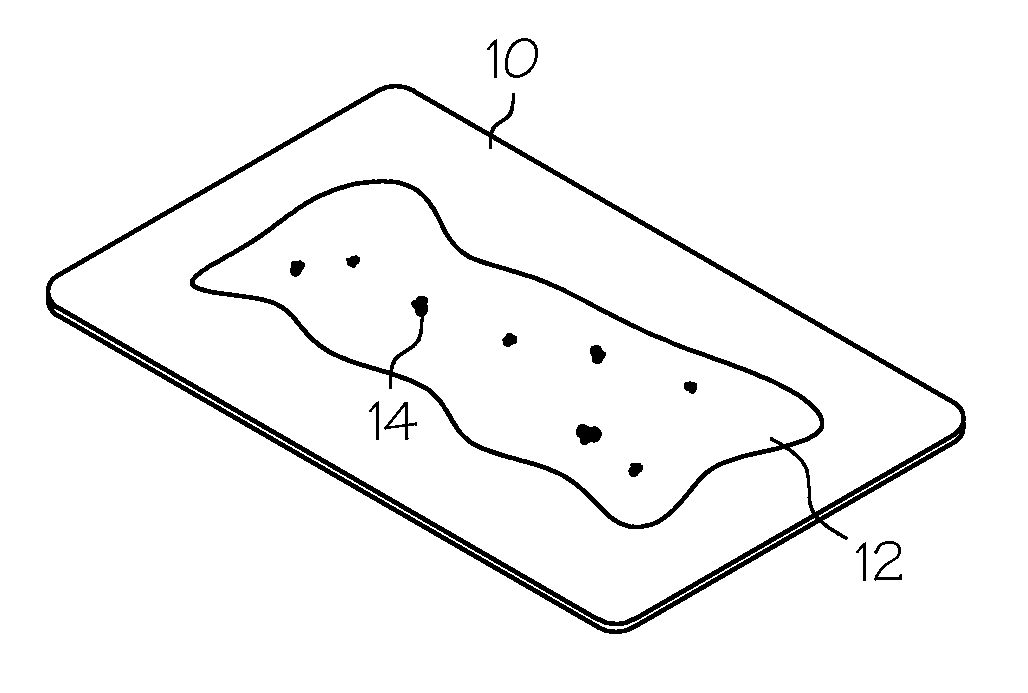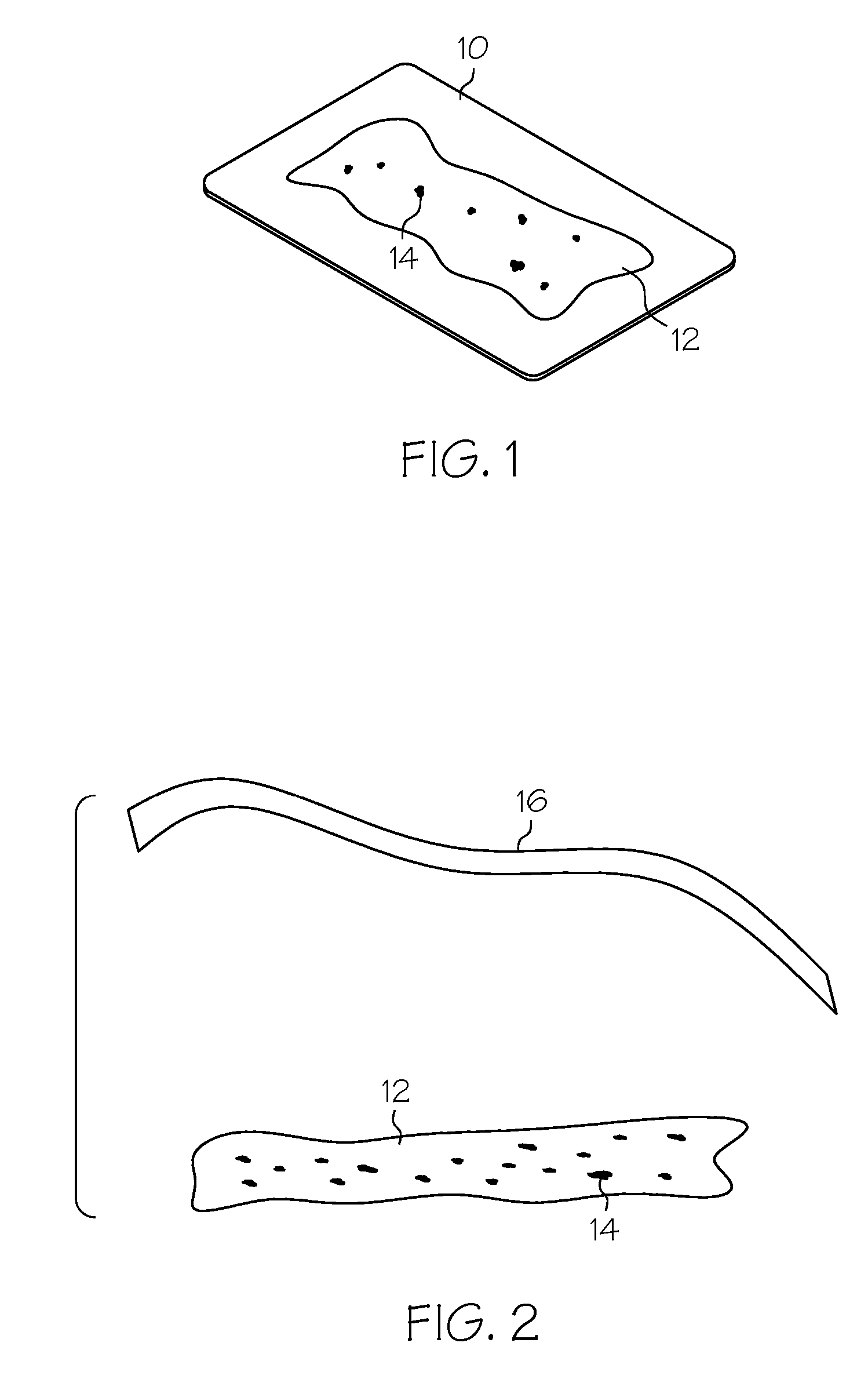Methods and Compositions For Topical Wound Treatment
a topical wound and composition technology, applied in the field of patients' wound treatment, can solve the problems of pressure ulcers alone imposing a tremendous human and financial toll, significant morbidity and cost, and significant morbidity, so as to improve the treatment of wounds on patients, improve the effect of wound treatment, and safe and effective amount of lidocain
- Summary
- Abstract
- Description
- Claims
- Application Information
AI Technical Summary
Benefits of technology
Problems solved by technology
Method used
Image
Examples
example case
STUDIES
Case One
[0051] A 91 year old white male hospice patient with end stage dementia. Wound on gluteal cleft had been worsening under prior treatment of Collagenase (Santyl®) and Polysporin® ointment (bacitracin zinc-polymyxin B). Prior to treatment with the method and composition of the present invention, the wound measured 4.5 cm3 and was tender. Treatment consisted of initially packing gauze strips coated with 2% viscous lidocaine in the wound bed. After wound had reduced in size to prevent packing (23 days after initial treatment), dressing containing 2% viscous lidocaine was applied to wound. FIG. 7 depicts the results of treatment of the gluteal wound. As can be seen from astonishing results depicted in FIG. 7, the gluteal cleft wound was unexpectedly reduced in size by approximately 85% in 23 days and completely healed in less than 80 days utilizing the present invention.
Case Two
[0052] A 86 year old white male with end stage renal disease and peripheral vascular diseas...
case three
[0053] A 40 year old white female hospice patient with end stage multiple sclerosis had a coccyx wound as well as multiple foot and leg wounds. Prior to treatment utilizing the present invention, the patient had 12 wounds with the coccyx wound having a surface area totaling 48 cm2. Treatment utilized the composition and method of the present invention: a 2% viscous lidocaine solution with bacitracin zinc-polymyxin B powder. The composition comprised approximately 18-19.8 mg of lidocaine hydrochloride, 500-1000 units polymyxin B sulfate and 25-50 units of bacitracin zinc per gram of the composition. The unexpected and astonishing results of the present invention are depicted in FIG. 9 which illustrates the amazing reduction in wound volume with complete healing in under 60 days.
[0054] These case studies demonstrate that the compositions and methods according to the present invention exhibit surprising results in the mitigation or elimination of non-healing wounds on patients.
PUM
| Property | Measurement | Unit |
|---|---|---|
| time | aaaaa | aaaaa |
| surface area | aaaaa | aaaaa |
| time | aaaaa | aaaaa |
Abstract
Description
Claims
Application Information
 Login to View More
Login to View More - R&D
- Intellectual Property
- Life Sciences
- Materials
- Tech Scout
- Unparalleled Data Quality
- Higher Quality Content
- 60% Fewer Hallucinations
Browse by: Latest US Patents, China's latest patents, Technical Efficacy Thesaurus, Application Domain, Technology Topic, Popular Technical Reports.
© 2025 PatSnap. All rights reserved.Legal|Privacy policy|Modern Slavery Act Transparency Statement|Sitemap|About US| Contact US: help@patsnap.com



